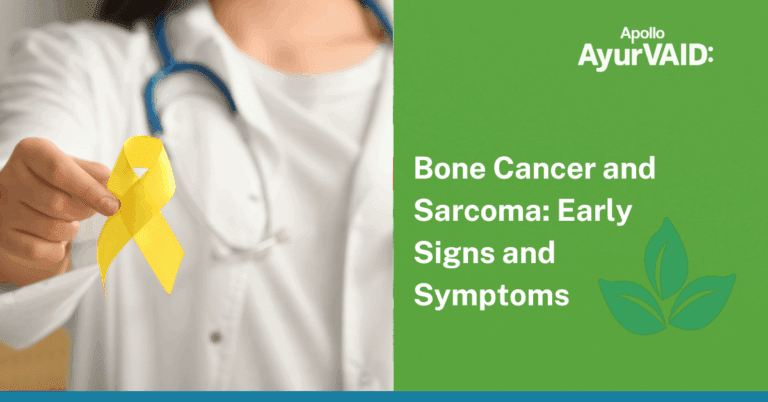Introduction
Parkinson’s disease is a progressive neurodegenerative disorder that affects movement, balance, and coordination. Although the exact cause of Parkinsons is still unknown, it can be attributed to the loss of dopamine-producing neurons in the brain. The disease presents itself in several ways giving rise to Parkinson’s disease types – idiopathic, vascular, and atypical types. Based on the degree of severity and eventual progression it is classified into five stages.
In the early stages of Parkinson’s disease, symptoms are often mild and may include slight tremors, stiffness, and changes in posture. In the last stages of Parkinson’s disease symptoms, the problems associated with movement and mobility generally become marked to the extent that they affect the performance of daily activities. At this stage, the patient’s motor functions would be severely limited, having problems swallowing and experiencing a notable decline in cognition, so there is usually care required for most of the day. Knowledge of stages is necessary to assess the progress, manage the disease, and improve the patient’s quality of life. Explore Parkinson’s disease stages, symptoms, signs, and the Ayurveda perspective in this blog.

Parkinson's Disease- Types
Parkinson’s Disease will have a symptom triad – bradykinesia, tremor and rigidity. Parkinsonism is the umbrella term used to describe a group of neurological problems affecting movement control, speech, and thinking (including Parkinson’s Disease). Parkinsonism is classified into Primary (includes Parkinson’s Disease and Atypical Parkinsonism) and Secondary Parkinsonism.
Primary Parkinsonism
Primary Parkinsonism (Parkinson’s Disease) is the most common form and is not associated with any other diseases. It is classified as –
Idiopathic Parkinson’s Disease: The most prevalent type with unknown cause, mostly related to movement
Familial Parkinson’s: Hereditary form with gene mutations
Early-onset or Young Onset Parkinson’s Disease (YOPD): Develops before the age of 50, and usually progresses slowly
Juvenile Parkinson’s: Occurs in those under age 21 and is associated with gene mutations
Atypical Parkinsonism
Atypical Parkinsonism or Parkinson’s Plus often affects brain functions beyond movement control. It is of the following types – Multiple System Atrophy (MSA), Progressive Supranuclear Palsy (PSP), Corticobasal Degeneration (CBD), and Dementia with Lewy Bodies (DLB).
Secondary Parkinsonism
Secondary Parkinsonism is caused by external factors that affect the neurons, such as exposure to pesticides, toxins, medications, strokes, or other health conditions. It is further classified as – Drug-Induced Parkinsonism, Vascular Parkinsonism, Toxin-Induced Parkinsonism, Post-traumatic Parkinsonism, and Normal Pressure Hydrocephalus.
According to Ayurveda, it is considered Kampavata (Kampa = tremors, Vata = the Dosha responsible for movement). This term describes an imbalance in the Vata Dosha that has affected the normal workings of an individual’s nervous system. The imbalanced Vata manifests itself in the body as impaired motor control and neurological instability.
- In Idiopathic Parkinson’s Disease, the primary imbalance of the Vata Dosha and degradation of the Majja Dhatu (nervous system) are involved, resulting in tremors and disturbed movement of the Vata.
- Familial Parkinson’s Disease is considered as Kulaja Vyadhi arises due to Beeja Dosha (genetic impairment) and occurs due to Vata and Pitta.
- Early-onset Parkinson’s Disease is often associated with ama accumulation, digestive fire imbalance, and tissue depletion.
- Secondary Parkinson’s is caused by Abhighata (trauma), and Dushi Visha (toxins) which in turn causes an imbalance in Vata, and Rakta dushti leading to blockage of the normal flow of Vata.
- The atypical form is Vyadhi Sankara, where multiple systems are involved in disease manifestation.
5 Stages of Parkinson’s
Hoehn and Yahr’s scale is often used to describe the stages of Parkinson’s. The stages progress from unilateral involvement (Stage 1) to bilateral involvement without balance impairment (Stage 2), mild to moderate bilateral disability with impaired postural reflexes (Stage 3), severe disability while still able to walk (Stage 4), and finally, confinement to a wheelchair or bed (Stage 5).
Stage 1: Early Stage
An early stage of Parkinson’s disease manifests with very vague symptoms, nearly all of which can go unnoticed during this time. The patient has:
- A slight shiver, more or less confined to a single side of the body
- The presence of some changes in body posture and facial expressions
- Minor imbalance and reduced coordination
- Reduced arm swing while walking
- Changes in handwriting (micrographia)
Patients will be functionally independent and symptoms can be controlled with medicines.
From an Ayurveda perspective, this initial stage represents Vata Dosha accumulation, particularly a disproportionate equilibrium between Prana Vata influencing movement and Udana Vata influencing speech and expression.
Stage 2: Moderate Stage
The disease advances and can begin to affect both sides in terms of progression. Signs include:
- Heightened tremors and rigidity involving the midline (including the neck and the trunk)
- Postural and gait changes that are notable
- Balance and coordination disturbances
- Speech changes, including a softer voice
- Greater time for tasks
The patient can still work independently, but daily living activities get more complex and longer to complete. This stage manifests due to increased Vata with Kapha Dosha involvement affecting Dhatu (tissue) function, most evident in Majja (nervous system) and Mamsa (muscular system).
Stage 3: Middle Stage
A major turning point in the stages of Parkinson’s is marked out by the third. Third-stage signs and symptoms include:
- Significant slowing of movements and even actions
- Increased fall risk
- Marked imbalance (unsteadiness as turns or pushes while standing)
- Motor symptoms worsening
- Trouble doing daily functions such as dressing and eating
- The efficacy of medicines may start to vary
- Depression and anxiety may become more prominent
- Functionally, the person is a bit inhibited in daily activities now but can still manage to lead an independent life
- Disability is mild to moderate at this stage
- They can mostly be independent but may require support with other tasks by this stage.
Here we see significant Vata-Kapha imbalance with some Pitta involvement, affecting Agni (metabolic fire) and leading to Dhatukshaya (tissue degeneration), particularly in the Majja.
Stage 4: Advanced Stage
Herein, limitations due to symptoms become profound. Patients have the following symptoms –
- Pronounced difficulty standing without assistance
- Episodes of freezing while walking
- An assistive walker or wheelchair
- Help required for most daily activities
- Increased cognitive difficulties
- Possible hallucinations or delusions
- It is a particularly caregiving-intensive stage requiring considerable alteration to living arrangements.
This stage marks a severe aggravation of Vata and Kapha with very diminished Ojas resulting in excessive depletion of the Dhatu.
Stage 5: Severe Stage
The last stages of Parkinson’s disease are the final and most challenging of all with the following symptoms:
- Total dependence on caregivers
- May not be able to stand or walk: stiffness in the legs
- Standing or walking independently is impossible
- Major mobility restrictions: bedridden or wheelchair-bound
- Extreme cognitive deficit
- Increased risk of complications
- At this stage, the patient indeed will require round-the-clock care. The focus shifts to maintaining quality of life and preventing complications.
The final stage shows complete Tridosha imbalance (Vata-Pitta-Kapha) with Majja Dhatu Kshaya (nervous tissue degeneration) and profound Ojas depletion, affecting all body channels and tissues.
This understanding will enable preparation for the future, including early intervention, sufficient exercise, emotional care, home modification, a strong support network, and long-term care planning.
Conclusion
A clear understanding of the various stages of Parkinson’s will help patients and caregivers foresee challenges ahead and thus arrive at an informed choice wherever care or treatment options are concerned. The course of Parkinson’s progression may differ from individual to individual, but knowing the stages helps better plan and manage the condition. Remember that early diagnosis and medical treatment can greatly impact the quality of life in all stages of the disease.

References
- Martínez-Martín, P (2010). Hoehn and Yahr Staging Scale. https://doi.org/10.1016/B978-0-12-374105-9.00034-4
- Selikhova, M et al. (2009). A clinico-pathological study of subtypes in Parkinson’s disease. Brain : a journal of neurology, 132(Pt 11), 2947-57. https://doi.org/10.1093/brain/awp234
- Asole, D V et al. (2024). AYURVEDA MANAGEMENT OF KAMPAVAT WITH SPECIAL REFERENCE TO PARKINSON’SDISEASE – A CASE STUDY. Sanjeevani Darshan – National Journal of Ayurveda & Yoga. https://doi.org/10.55552/sdnjay.2024.2119
- Menon, N M et al. (2021). Understanding Parkinson’s Disease (PD) in Ayurvedic Prospective. International Journal of Ayurveda and Pharma Research, 86-92. https://doi.org/10.47070/IJAPR.V9I6.1944
- Dharmani, G, Bhardwaj, D (2022). Management of Parkinson’s disease through Ayurvedic approach: A case report. Journal of Ayurveda Case Reports, 5, 183 – 186. https://doi.org/10.4103/jacr.jacr_116_21






